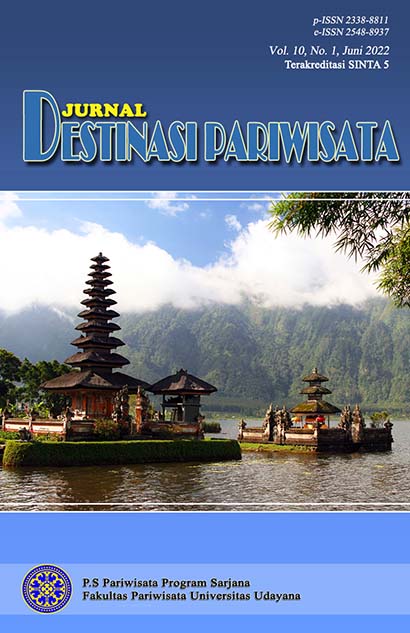Manajemen Krisis di Kawasan Ekonomi Khusus Pariwisata Tanjung Lesung Pasca Tsunami Selat Sunda tahun 2018
Abstract
Tanjung Lesung Tourism Special Economic Zone is one of the ten priority tourist destinations in
Indonesia. This area was hit by a tsunami that was caused by tidal waves and underwater landslides due
to the eruption of Mount Anak Krakatau on December 22, 2018. This tsunami was a silent tsunami so it
was difficult to predict, causing a severe impact in the tourism sector. Thus, the researcher examines the
crisis and crisis management after the Sunda Strait tsunami in the tourist destination of Tanjung Lesung.
The concepts used as the basis for this research are crisis management, disaster management, Special
Economic Zones, tsunamis and destination images. The method used is a qualitative research method with
qualitative descriptive analysis techniques. The types of data used are qualitative and quantitative. The
data sources used are primary and secondary data. The data is collected through observation, interviews
and documentation. The technique of determining the informants in this study was using purposive
sampling technique.
The results of this study indicate that the impact of the post-tsunami crisis in Tanjung Lesung can be
seen from several aspects, namely the physical, economic, social and psychological impacts. The physical
impact is damage to attractions, accommodation and access to Tanjung Lesung. The economic impact is
seen from the reduction in employment, decreased income and the amount of investment that is not in line
with the target. The social impact caused is the number of casualties, while the psychological impact is
the existence of trauma, anxiety, stress, depression and post traumatic disorder. Crisis management is
divided into three stages, namely pre-crisis, crisis and post-crisis. In the pre-crisis phase, it was known
that Tanjung Lesung was one of the tsunami-prone areas because it was directly adjacent to the Sunda
Strait, besides that the area administrator still did not have its own Standard Operating Procedure (SOP)
that was in accordance with the situation of the area. At the crisis stage, the cooperation between the
government and managers was already going well in evacuating tourists and distributing aid. In addition,
social media control is also carried out by monitoring various news media. In the post-crisis phase,
improvements to tourism attractions, facilities and access are carried out, improving the image of SEZ
tourism to become disaster-resilient tourism areas, updating disaster detection systems and evacuation
routes, as well as promotion by holding events, festivals and several promotional visits.
Keywords: Crisis Management, Impact, Tsunami, Tanjung Lesung Tourism SEZ.
Downloads









